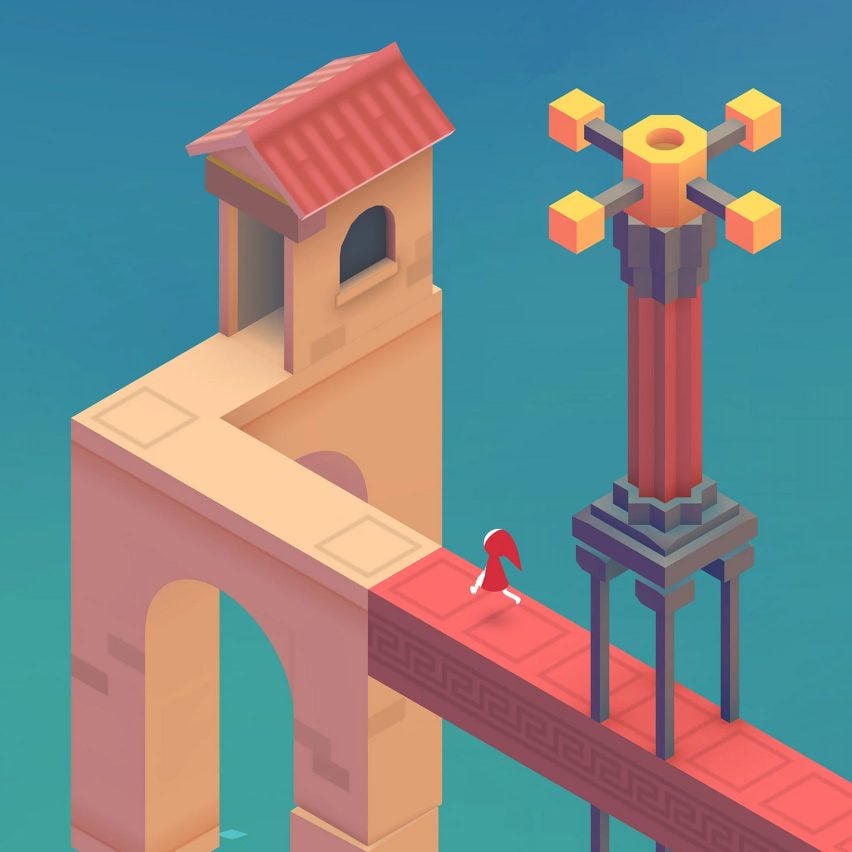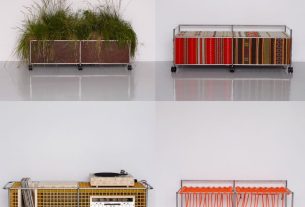
Rumours of the metaverse‘s demise are greatly exaggerated – particularly when it comes to designing virtual buildings, writes Sarah Housley.
An article about the metaverse? Is it 2020? No futures vision has burned more brightly or been abandoned more quickly this decade than the metaverse.
But like all “failed” futures, the metaverse has not gone. It’s still being developed, away from the spotlight, and the idea of designing for virtual worlds is just getting started.
The metaverse is widely considered to have entered a winter
On the Gartner Hype Cycle, a model that the tech industry widely references to measure the buzz, development and adoption of emerging technologies, it would be fair to place the metaverse firmly on the down slope, in the “trough of disillusionment”. The hype has moved on, and the metaverse is widely considered to have entered a winter: a period of time where investment reduces and technological advances slow down.
And yet, social virtual worlds are still being used every day. Roblox now has 111 million daily active users and 380 million monthly users, and hit an all-time high concurrent user count on 12 July, with 32 million players on the platform. Other online worlds have much smaller numbers of regular users but enjoy tight-knit communities, where the focus is often less on gaming and more on worldbuilding.
Fast-growing social virtual reality (VR) platform VRChat hit almost 67,000 concurrent users in January this year. Second Life has 500,000 monthly active users; Meta’s social VR platform Horizon Worlds has roughly 200,000.
More than half of Roblox users are under 16. Young people are growing up in virtual spaces, and as they do so they’re designing these spaces too.
Virtual architecture is developing its own culture and customs, which are specific to each platform: in Fortnite’s build battles, the built environment is constructed and shot down, in real time, during combat; in VRChat, thousands of people collaborated recently to co-construct a monument.
So far, buildings in the metaverse have generally mimicked the architectural styles that are familiar offline. Over time, virtual spaces will develop their own design language – and there’s so much to try out.
Now the big tech companies have moved on, there’s room for DIY creativity to shine
Virtual designers can erase laws of gravity and physics, and introduce different modes of sensory perception. Ustwo’s indie game Monument Valley (pictured top) hints at some of the aesthetic and experiential possibilities, with its Escher-like staircases and rotating islands.
In metaverse designs, rooms can become bigger as you walk through them, and elements such as colour, light, texture and shape can shift in response to biometrics and sensed emotions. In Deep Reality, a VR project by the MIT Media Lab’s Fluid Interfaces group, an underwater environment responds to the signals collected and processed from a headset and wristband the participant is wearing, changing to relax the wearer and slow their heart rate.
We can choose to immerse ourselves in extreme and challenging spatial environments, knowing that we can exit immediately if needed. Cave Crave, a VR spelunking experience by 3R Games that puts you inside a claustrophobically tight cave space, begins to explore the possibilities of this.
Virtual spaces can also be used for more straightforwardly positive reasons. A new study by the Max Planck Institute for Human Development found that virtual depictions of nature can have tangible effects on mood and state of mind.
Immersing participants in a virtual forest enhanced with sound and scent reduced their stress levels and deepened their feeling of being connected to nature, the study found, suggesting that VR “forest baths” could have therapeutic potential in situations where nature is otherwise scarce.
Commercial depictions of the metaverse – glossy adverts showing people working, socialising and relaxing as avatars – failed to convince the general public that this was a world they needed. Now that some of the big tech companies have moved on, there’s room for small teams, new ideas and DIY creativity to shine.
Virtual spatial design can be quick, spontaneous, instinctual and easily edited
Spatial simulation sites like Rooms, which is Sims-like in its play, show the creativity that unfurls when we give everyone the tools to try out interior design. Tools like these could inspire a new generation to not only want to be designers, but more broadly, to understand the value and impact of design.
Space Elevator, developed by NUMENA for the Meta Quest, is a sketching tool for creating spatial environments. Users can easily design buildings, furnish them and transplant them into different settings, choosing whether to follow conventional rules, or not.
“Users can create houses with floating furniture or experience what it’s like to be in a room with walls made of water,” said the app’s UX designer Maria Nikoli. “I discovered that users love transcending the limits of reality.”
Virtual spatial design can be quick, spontaneous, instinctual and easily edited as moods or needs change. It can be designed solo or together, in a process akin to improvising music.
New design processes are leaning into this flexibility. Vibe coding, which enables non-specialists to code software by prompting an AI tool, is starting to extend to “vibe designing” for virtual worlds.
Meta has developed AI Environment Generation for Horizon Worlds so that creators can bring an entire space into existence using only a text prompt; Roblox’s Cube 3D works similarly for objects and environments.
It may be virtually that we see the most exciting spatial experiences emerging
As virtual design becomes easier and more accessible, people who are interested in designing spaces and experiences may decide to learn how to do this virtually rather than physically. Some people will work virtually to enhance physical design processes, using digital twins and simulations to enable architects and designers to increase efficiency and resilience by modelling the life of a product or space over time. Others will design virtual worlds to be inhabited solely for their own pleasures and possibilities.
Virtual spaces are not impact-free: they use energy and water and have a carbon footprint. As data centres expand to enable us to use ever more digital technologies, emissions and pollution are rising fast. To make sustainable virtual worlds, we’ll need to design and power them responsibly and run them equitably.
But the possibilities of virtual design are tantalising, and the tech is starting to catch up to those possibilities. It may be virtually that we see the most exciting spatial experiences emerging over the decades to come.
Sarah Housley is a writer, researcher, consultant and speaker specialising in the future of design and ethical innovation. She was formerly head of consumer tech at trend forecaster WGSN. Her new book, Designing Hope: Visions to Shape Our Future, is published by The Indigo Press.
The image is courtesy of Ustwo.
Dezeen In Depth
If you enjoy reading Dezeen’s interviews, opinions and features, subscribe to Dezeen In Depth. Sent on the last Friday of each month, this newsletter provides a single place to read about the design and architecture stories behind the headlines.
The post "The idea of designing for virtual worlds is just getting started" appeared first on Dezeen.


